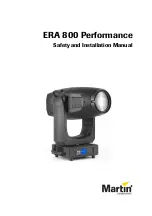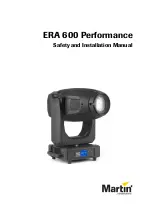
©Copyright Task Force Tips LLC 2021
3
LIF-200 May 10, 2021 Rev00
3.0 GENERAL INFORMATION
TFT hose clamps are intended to be used to temporarily stop the flow of pressurized water in single jacket canvas, rubber, or synthetic
jacketed hose up to 1-1/2” without permanent damage to the hose.
4.0 OPERATION
4.1 INSTALLING THE CLAMP (METHOD 1)
4.2 INSTALLING THE CLAMP (METHOD 2)
WARNING
Forcing the tool to close may result in incomplete shut off, damage or injury. To reduce risk:
• Prior to each use, inspect for misalignment, binding, or breakage.
• Never force the tool to perform a shut off.
NOTICE
The clamp is self-locking and will remain locked until released. Do not leave a clamped hose
unattended.
1. Set the hose nozzle to a trickle.
2. Fully open the hose clamp.
HOSE 1-1/2” MAX
Footpad
Push
Push
Lower
Handle
Upper
Handle
5. Stabilize the tool by placing one foot on the footpad.
3. Remove rocks, dirt, debris, etc. from the area
of the hose where the clamp will be applied.
4. Position the hose between the jaws of the clamp
with the lower handle on the ground and the upper
handle fully opened.
6. Use one hand on each side of the hose to push the
hose as far into the jaws as possible.
7. Depress the upper handle to
shut off flow.
Upper
Handle
OPEN
1. Set the hose nozzle to a trickle.
2. Fully open the hose clamp.
OPEN
3. Remove rocks, dirt, debris, etc. from the area
of the hose where the clamp will be applied.
4. Holding the lower handle with one hand, place the hose
between the jaws of the clamp. The weight of the hose
will pull the hose into the tool.
HOSE 1-1/2” MAX
5. With one hand on each handle, push
the handles together to close the clamp.
6. Carefully place the clamped hose on
the ground.






















